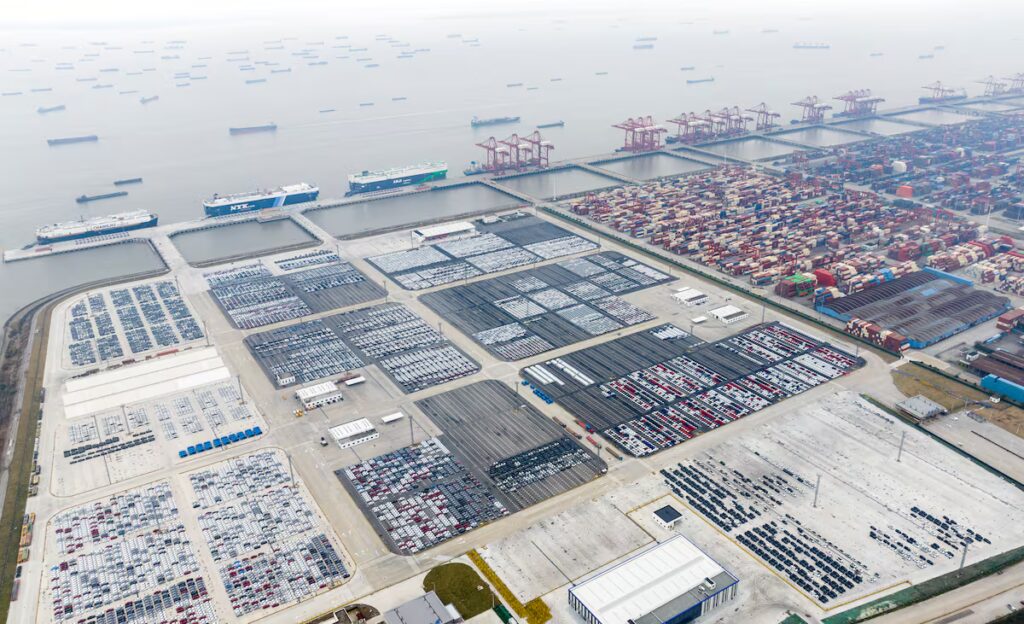
The plan of the president of Mexico, Claudia Sheinbaum, to stop the wave of Asian imports, through tariffs, is sailing through storms. In recent weeks, tensions between the government and the business world have intensified due to the Executive’s proposal to increase taxes on more than 1,400 items from countries with which Mexico does not have free trade agreements, with particular attention to China, the Latin American country’s second largest trading partner. Amid a trade war between the United States and China, the Mexican government has proposed that starting next year tariffs of up to 50% would be applied to imports of cars, clothing, cardboard, steel and other products, mostly from Asia. However, industrialists based in the country warn that the sudden application of these tariffs will increase production costs and reduce their competitiveness. For this reason they turned to the Legislative Power to try to postpone its entry into force until 2027 or, at least, make the sentence more flexible.
Although Sheinbaum has defended this series of tariffs to reduce the trade deficit with Asia and help local producers, the Asian giant has rejected the measure and assured that it will launch its own investigation into the proposal. Reflecting on how the negotiations move behind the scenes, the managers of Chinese giants such as Huawei, Didi or Changan, gathered one October morning at the Industrial Club of Mexico City, listened carefully to the plans of the new management of the Mexico-China Chamber of Commerce and Technology in view of 2026. Although the imminent shift to imports was the common thread that united the discussions, the conclusion of the assembly is that relations between the countries will prevail in the long term, even in the midst of tensions between states United States and China.
During the meeting, Senator Yeidckol Polevnsky, an experienced figure within the ruling Morena party, was honored. In a fiery speech he vowed to oppose the proposal when it reaches the Upper House. “We want more investment in Mexico, to generate more jobs. We have a lot of work to do there. I propose to find the solution to bring more Chinese companies to Mexico. We need to explain in detail what these tariffs imply, because if they come in, the impact of inflation will be excessive, but it will also hurt many companies that may close down and many others will lose or generate unemployment,” he told a room full of Asian entrepreneurs.
Those who oppose the tariffs point out that while Mexico has used the measure to revive a narrative of protection for its production, it is also a gesture in favor of its main trading partner, the United States, on the eve of the revision of the USMCA treaty. At stake is the recomposition of production chains in Mexico, especially those that depend on Chinese inputs in strategic sectors such as electronics and the production of electric cars. China is Mexico’s second largest importer, behind only the United States, with shipments to the Latin American country worth more than $129 billion, according to official data.
After weeks of pressure, the initiative will be reviewed internally. Lawmakers in the Chamber of Deputies will meet with entrepreneurs to discuss the ruling. Alfonso Ramírez Cuéllar, deputy coordinator of Morena in the Chamber of Deputies, indicated that the intention of these tables is to lead to a tariff policy that is as consensual as possible. “We’re doing everything we can to get it out during this period of sessions. We don’t want to hit anyone or cause shortages of some inputs, we want to ensure competitiveness and be able to standardize tariff rates with our partners so that there are no disparities or very large gaps between what we charge here, what the United States charges and what they charge Canada,” he says.
The tariff revision comes at a difficult time for the Mexican economy: gross domestic product (GDP) fell by 0.3% in the third quarter of the year, with marked weakness, especially in industrial activities. The Confederation of Employers of the Mexican Republic (Coparmex) warned that the sudden application of tariffs could generate disruptions in supply chains, shortages and an inflationary impact on consumers and supported a gradual tariff adjustment, technically supported and compatible with local production capacity.
Mexico will have to adapt to the fact that official discourse clashes with the incessant flow of Asian imports that Mexican and foreign companies make every day and are part of their supply chains. According to official data, in 2024 the Latin American country imported more than 129 billion dollars from China. Instead, it only sent goods worth less than $9 billion to that country. A pronounced trade imbalance that the Mexican government seeks to address through increased tariffs.
Ildefonso Guajardo, secretary of Economy in the government of Enrique Peña Nieto and head of the USMCA negotiations in that semester, points out that the fact that the application of tariffs on 1,400 hamlets was stopped is a sign that many things that would have affected value chains were included, so a second review will have to be done in Congress. “You have to be very careful about what to tax or what to impose tariffs on, you can’t impose tariffs on things that we don’t do in North America yet because that affects competitiveness and, above all, don’t get ahead of ourselves until we know what the relationship between the United States and China will be like,” he explains.
Mexico, on the radar of Asian investors
For companies with Chinese capital and local interests the equation is more complex, because it combines economic and political interests. “We always talk about the deficit (between Mexico and China), but this is a trap, because our economy has changed in the last 30 years and we have stopped exporting oil, gas, shrimp, avocado, silver, copper and gold to become, mainly, exporters of manufactured goods,” says Amapola Grijalva, president of the board of directors of the chamber that represents Chinese entrepreneurs in Mexico. “The more pacemakers, televisions, cars or spare parts we export, the more inputs we will need from around the world,” he said. According to official data, in 2024 Chinese direct investments in the country will exceed 710 million dollars.

Looking ahead, even as uncertainty about what will ultimately result from the proposal weighs on investor decisions, the lobby begins to encourage movement. Two participants in the Mexico-China Chamber meeting comment that they are gathering information to move the operations of their interior design distribution center from Los Angeles to Chihuahua. It will also establish a factory there to expand its production of lamps, wood panels and furniture, currently focused on China, and thus supply the Mexican market and export to the United States.
Eric Liu, director of Huawei’s business environment council, agrees that they will look for ways to continue working with the host country’s government. “Mexico has great potential and we have been here for 24 years: we have grown with this beautiful country and thanks to the government that has offered us an excellent business environment. This is why we have grown from 35 people to 2,600. We arrived with a single business operator and now we have five business divisions, including business, consumer, digital energy and cloud”, he concludes, after having participated with dozens of Chinese executives in the official photograph of the assembly.





